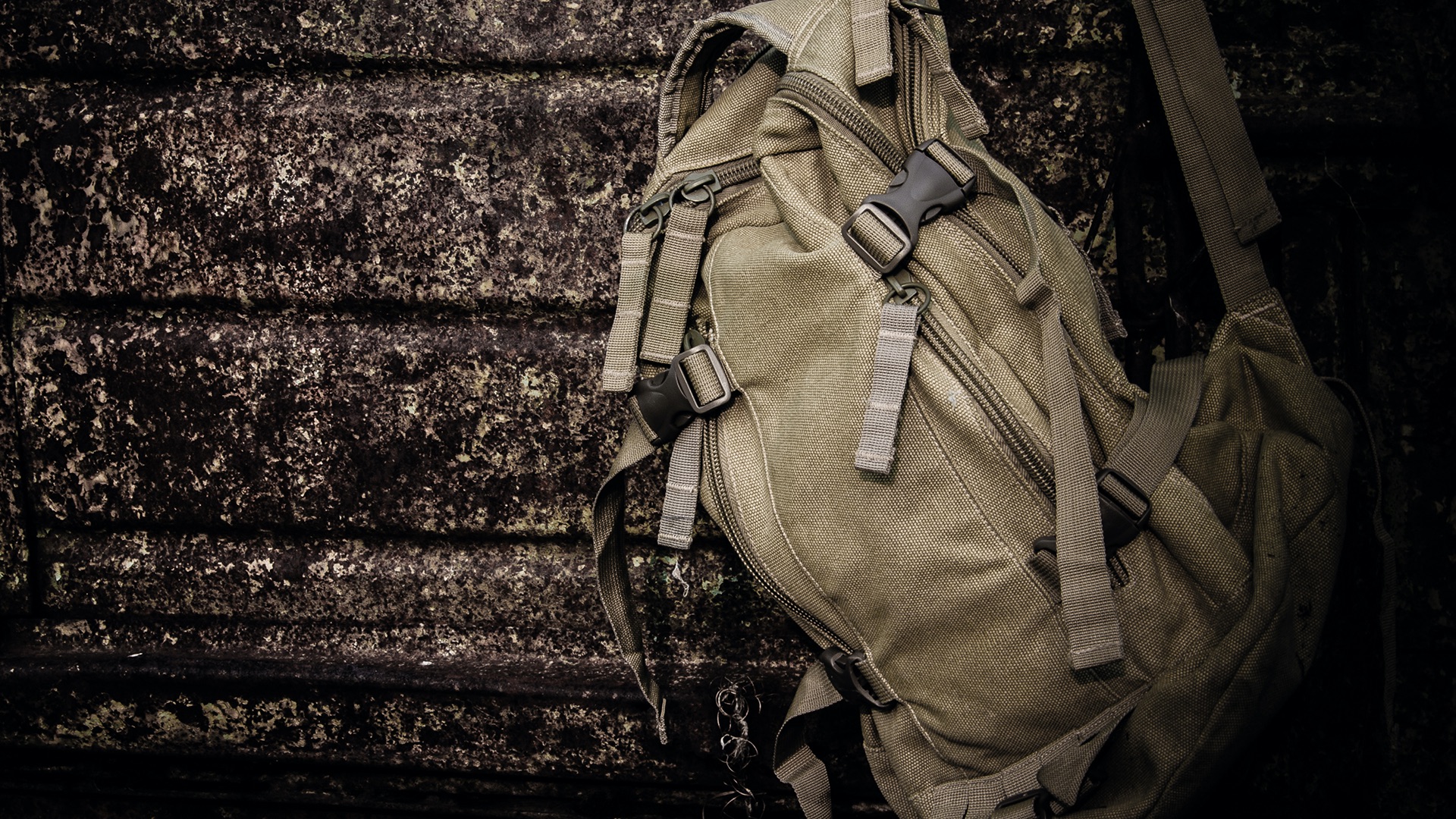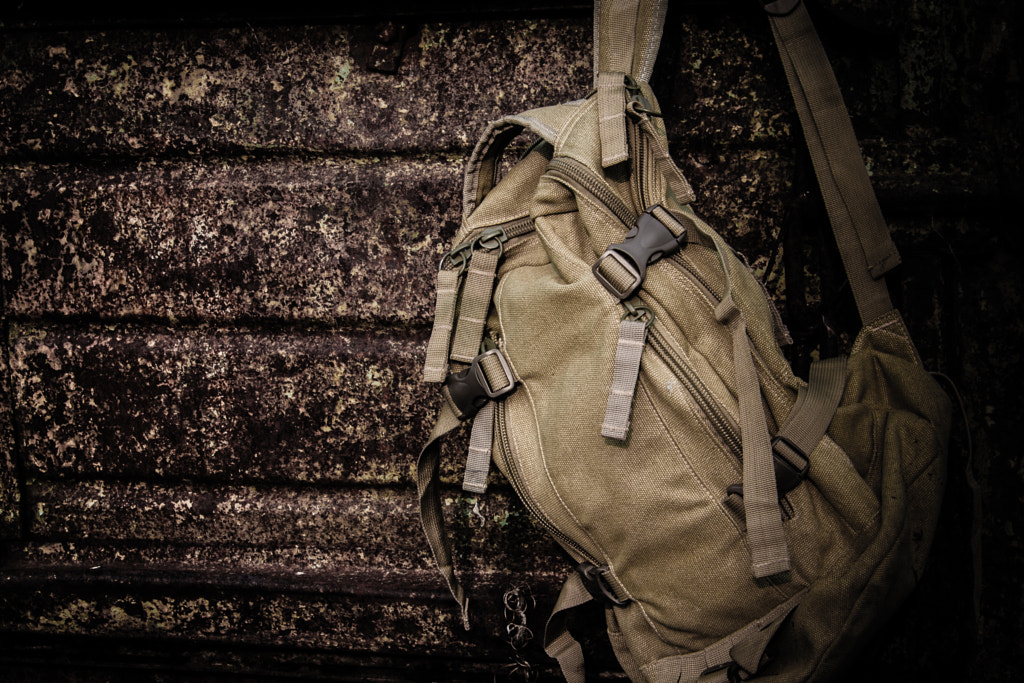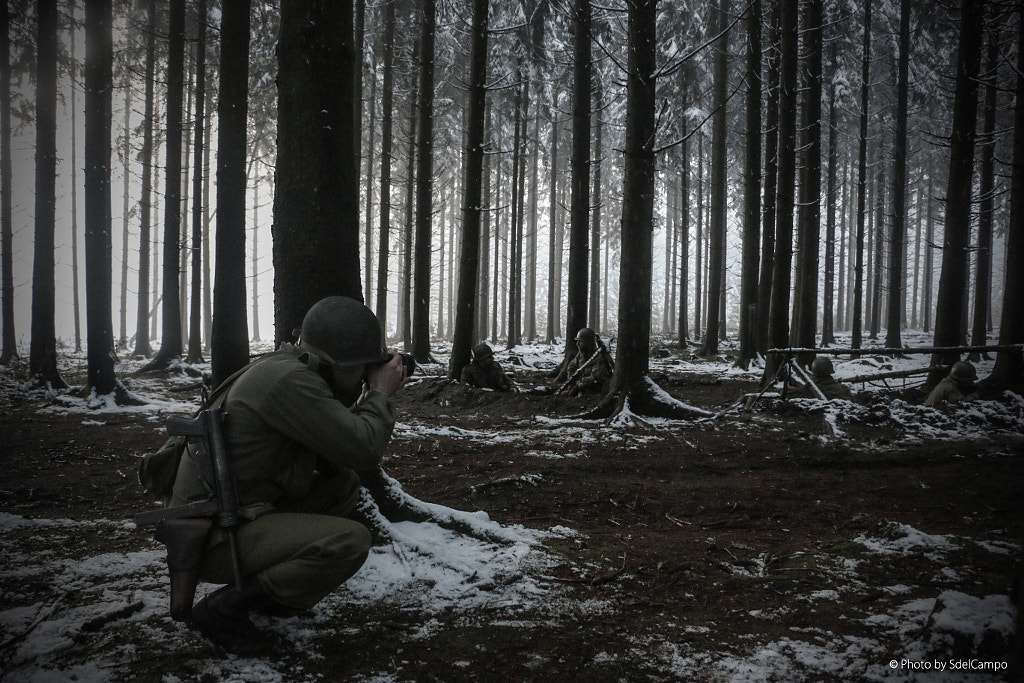Over the last two years, there have been a few high-profile cases involving camouflage prints on clothing; in 2018, an outdoor company sued a major fashion brand over the use of a camo pattern, and again in 2019, a Montana company sued a New York streetwear brand, also alleging copyright infringement.
As camouflage has taken over the fashion world, it’s also posed some tricky questions about intellectual property. Patterns can be copyrighted, and as much as these rules affect clothing companies and designers, they also influence photographers who license their work for commercial or creative use.
When browsing photos to use in their own marketing, companies must steer clear of any references to other brands or designers, including a print on a jacket or bag. As a result, commercial Licensing platforms like 500px—and its distributors—can’t accept photos with recognizable camo patterns. These restrictions protect the photographer, the distributor, and the client from any potential legal claims brought by the person who owns the copyright for the pattern.
“Camouflage is one the most common reasons for an otherwise great photo to be declined from Licensing,” the 500px Content Team tells us. “There are obvious things to avoid in commercial stock photography—like brand names and logos—but there are also more overlooked Intellectual Property issues. These are issues like phone back camera designs, side buttons, the Adidas 3-stripes on clothing, and more—but the most commonly overlooked of these is camouflage.”
The Getty Images Intellectual Property (IP) Wiki, an evolving database of potentially problematic landmarks, architecture, artworks, and more for commercial photographers, lists camouflage under both the ‘artwork’ and ‘product’ sections. One reason is that many camouflage prints are based on copyrighted photographs; in cases like these, you’re unlikely to be able to secure a property release, so it’s best to avoid them altogether.
As with any rule, there are some situations where photos featuring camouflage might be licensable, such as those rare cases where a property release is feasible. If you collaborate with a local designer who created the pattern and holds the copyright, for instance, you could always ask them, as the rightsholder, if they’d be willing to sign a release. Explain that you’d like to re-license the images through a stock photography platform, and consider offering discounted prints for their lookbooks or ads in exchange for their written permission.
If you don’t know the rightsholder and only realized that your model was wearing camouflage after the photoshoot, it doesn’t necessarily mean you can’t license any of the photos. It just means you have to get creative in post-processing to avoid infringing on someone else’s intellectual property. The first and easiest way to do this would be to crop out the pattern entirely, if you can pull it off without ruining the photos.
You can also use the clone stamp tool to distort or manipulate the pattern itself. Take a small sample to clone, and alter the pattern as you wish. Camouflage patterns might seem generic, but if the manufacturer or rightsholder would be able to identify it in your photo, it won’t be accepted for commercial Licensing, so take your time to ensure the original print is unrecognizable.
Alternatively, you might select the blur tool to handle problem areas and render them unrecognizable as camouflage, but remember to use a light touch so it’s not obvious you’ve edited the photo. A subtle field or lens blur can take care of camo prints in the background (say, on wallpaper), given that they aren’t in focus and aren’t your main subject. The trick here is making sure the photo doesn’t look blurred or altered, as that could lead to the image being rejected for technical reasons, so only use it when appropriate.
Of course, the best solution is to avoid camo prints before your shoot—rather than spending time obscuring them after a session. With most commercial shoots, even a casual one at home with family and friends, you’ll have the freedom to help style your models in outfits that work for Licensing.
Consider developing a style guide for new models with a basic list of do’s—e.g., solid neutral colors, clothing without branding—and don’ts, including logos, heavy patterns, and, of course, camouflage. Send it over as a PDF, and field any questions your team might have. Models can always send you photos of garments they’d like to wear and get your thoughts.
You can always ask them to bring a few different options to change into for variety; if something won’t work, you’ll have alternatives. Check out our article How to style your model for a commercial shoot for ideas of what works and what doesn’t—and some resources to add to your toolkit.
Commercial photographers help define our culture’s biggest trends, including those within the lifestyle and fashion industries. Recent trends—such as art deco designs, bright florals, and camouflage—have understandably found their way into the world of commercial stock photography. But many of these patterns are protected by copyright, so while they might make for great photos, they can also lead to image rejection if you’re not careful.
One way to combat this problem is to interpret trends rather than simply following them. Instead of literal camouflage, for instance, you can allude to the popular style using colors and textiles. The Content Team tells us, “Items like canvas army hats, canvas bags, and solid color fatigues can all help build the military aesthetic for photographers specifically after that look, though all labels, brands, identifying names, and numbers should be removed. Using the army green color in a shoot can also be a great way to subtly connect to the same themes that camouflage provides.”
In general, solid colors are a safe bet for commercial photography. Colors can be copyrighted—Tiffany blue and Louboutin red come to mind—but these are exceptions to the rule. If you’re looking to mimic the effect of camouflage, look for earthy greens and browns. You can combine them in a single outfit or style each model in different colors for some variety.
Before any shoot, it’s good practice to check out The Getty Images Intellectual Property Wiki to see if any product or design you want to use is protected. If you’re unsure, stick with simple, unbranded clothing. One benefit of approaching shoots in this manner is that you end up with images that are both trendy and timeless—and that appeal to a wide variety of image-buyers.
By keeping your styling somewhat generic—using a few key colors rather than a specific pattern—you not only avoid intellectual property issues, but you also keep your photos practical enough to be downloaded over and over again. In commercial Licensing, that kind of longevity is often the mark of a strong portfolio.
Not on 500px yet? Click here to learn about Licensing with 500px.










Leave a reply